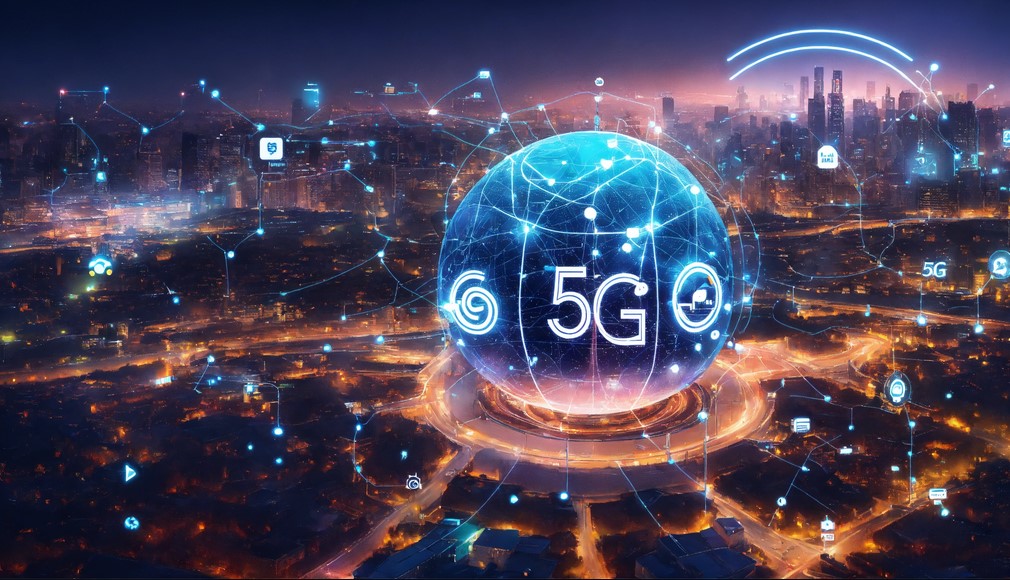The rollout of 5G technology marks a significant leap in wireless communication, promising faster speeds, lower latency, and greater connectivity. This article explores the key features of 5G, its transformative potential across various sectors, and the challenges associated with its implementation.
Understanding 5G Technology:
- Key Features of 5G:
- Faster Speeds: 5G networks offer download speeds up to 10 gigabits per second, significantly faster than 4G LTE. This enables quicker data transfer, seamless streaming, and enhanced mobile experiences.
- Lower Latency: With latency as low as 1 millisecond, 5G ensures near-instantaneous communication, crucial for applications like autonomous vehicles, remote surgery, and real-time gaming.
- Increased Capacity: 5G supports a higher density of connected devices, facilitating the growth of the Internet of Things (IoT) and enabling smarter cities, homes, and industries.
- Improved Reliability: Enhanced network reliability and availability make 5G suitable for mission-critical applications, ensuring consistent performance even in high-demand scenarios.
- Technological Advancements in 5G:
- Millimeter Waves: 5G utilizes higher frequency bands (millimeter waves) to achieve faster data transfer rates. These bands offer more bandwidth but have shorter ranges, necessitating a dense network of small cells.
- Small Cells: Small cells are low-power base stations that provide coverage in localized areas. They are crucial for delivering the high speeds and low latency of 5G, especially in urban environments.
- Massive MIMO: Multiple-input, multiple-output (MIMO) technology uses multiple antennas to send and receive more data simultaneously. Massive MIMO enhances spectral efficiency and network capacity.
- Beamforming: Beamforming directs wireless signals toward specific devices rather than broadcasting in all directions, improving signal strength and reducing interference.
Transformative Potential of 5G:
- Enhanced Mobile Broadband: The increased speeds and capacity of 5G will revolutionize mobile broadband, enabling high-quality video streaming, immersive augmented reality (AR), and virtual reality (VR) experiences, and seamless cloud gaming on mobile devices.
- Internet of Things (IoT): 5G’s ability to connect a vast number of devices simultaneously will accelerate the adoption of IoT. Smart cities, homes, and industries will benefit from real-time data collection, automation, and remote monitoring, enhancing efficiency and sustainability.
- Healthcare: 5G will transform healthcare by enabling remote diagnostics, telemedicine, and robotic-assisted surgeries. High-speed, low-latency communication allows for real-time transmission of medical data and high-definition video, improving patient care and access to medical services.
- Autonomous Vehicles: The development of autonomous vehicles relies on ultra-reliable, low-latency communication to ensure safety and coordination. 5G will facilitate vehicle-to-everything (V2X) communication, allowing autonomous cars to interact with each other and their surroundings in real-time.
- Industry 4.0: 5G will drive the fourth industrial revolution by enabling smart factories, predictive maintenance, and advanced automation. Industrial IoT (IIoT) applications will benefit from real-time monitoring, data analytics, and enhanced connectivity, leading to increased productivity and reduced downtime.
Challenges in 5G Implementation:
- Infrastructure Deployment: Deploying 5G networks requires significant investment in infrastructure, including the installation of small cells, fiber-optic cables, and upgraded base stations. The rollout is particularly challenging in rural and remote areas.
- Spectrum Allocation: Allocating sufficient spectrum for 5G while managing interference with existing services is a complex task. Governments and regulatory bodies must balance the needs of various stakeholders and ensure efficient spectrum use.
- Security Concerns: The increased connectivity and reliance on 5G networks raise concerns about cybersecurity. Protecting 5G infrastructure from cyberattacks, data breaches, and espionage is critical to ensuring the security and privacy of users.
- Health and Environmental Impacts: Public concerns about the potential health effects of exposure to millimeter waves and the environmental impact of increased infrastructure need to be addressed through transparent research and regulations.
- Interoperability and Standards: Ensuring interoperability between different 5G networks and devices is essential for seamless global connectivity. Developing and adhering to international standards will facilitate a unified and efficient 5G ecosystem.
Future Prospects of 5G:
- Global Adoption: As countries continue to roll out 5G networks, global adoption will drive innovation and competition in various sectors. The widespread availability of 5G will create new opportunities for businesses and consumers alike.
- Integration with Emerging Technologies: 5G will act as a catalyst for emerging technologies such as artificial intelligence (AI), edge computing, and blockchain. The combination of these technologies will enable smarter, more efficient systems and applications.
- Economic Impact: The economic impact of 5G is expected to be substantial, with increased productivity, job creation, and new business models. Industries such as telecommunications, manufacturing, and healthcare will experience significant growth and transformation.
- Sustainable Development: 5G can contribute to sustainable development by enabling smart grids, efficient resource management, and remote work. The technology’s potential to reduce energy consumption and carbon emissions aligns with global sustainability goals.
5G technology is poised to transform connectivity, drive innovation, and enable a new era of smart, interconnected systems. While challenges remain, the benefits of 5G in enhancing mobile broadband, IoT, healthcare, autonomous vehicles, and industry are immense.


